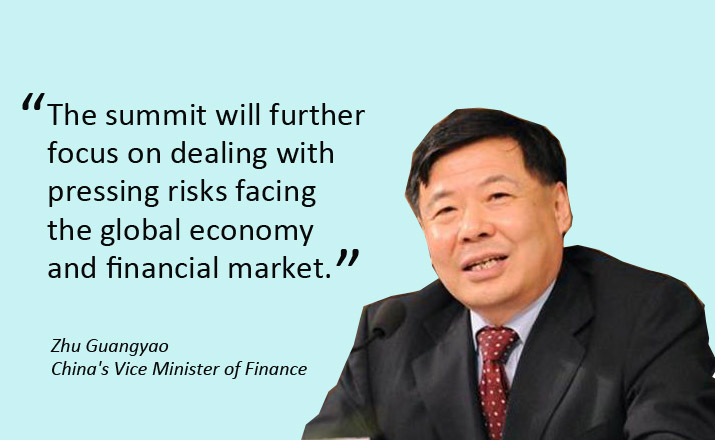International experts laud China’s achievement in climate governance – bjreview.com.cn

International Conference on Climate Leadership: A Report on Contributions to Sustainable Development Goals
Fostering Global Partnerships for Climate Action (SDG 17 & SDG 13)
The International Conference on Climate Leadership in Harbin highlighted the essential role of international cooperation in achieving global climate targets, with a specific focus on China’s contributions to the Sustainable Development Goals (SDGs).
- International Collaboration: Bronwyn Wake, chief editor of Nature Climate Change, noted the professionalism and robust research from Chinese scholars on climate governance. She emphasized the importance of China’s continued leadership in driving the global climate agenda and supporting international cooperation, aligning with SDG 17 (Partnerships for the Goals).
- Policy Leadership: Ma Chaode, Assistant Resident Representative of the UNDP in China, stated that the nation’s carbon peaking and neutrality goals offer a critical roadmap for global climate governance. He expressed hope for China to leverage its influence in technology and finance to help the global community meet emission targets, directly supporting SDG 13 (Climate Action).
- Academic Contribution: The conference itself served as a platform for experts from multiple countries to deliberate on international climate cooperation and low-carbon innovation, reinforcing the principles of SDG 17.
Technological Innovation for Sustainable Infrastructure and Energy (SDG 9 & SDG 7)
Experts recognized China’s advancements in technology and infrastructure as crucial pillars for global sustainability efforts.
Affordable and Clean Energy (SDG 7)
- Professor Kannan Govindan of the University of Adelaide identified China’s renewable energy sector as fundamental to global climate action.
- He observed that rapidly advancing clean energy technologies, such as solar panels and wind turbines, are reducing global energy production costs and strengthening the resilience of global supply chains.
- Official data from the National Energy Administration (as of June 2025) demonstrates significant progress towards SDG 7:
- Wind Power Capacity: Reached 570 million kilowatts, a 22.7% year-on-year increase.
- Solar Power Capacity: Reached 1.1 billion kilowatts, a 54.2% year-on-year increase.
Resilient Infrastructure and Sustainable Cities (SDG 9 & SDG 11)
- Professor Govindan also pointed to China’s pilot initiatives for eco-cities and sponge cities as unique and effective climate governance practices that enhance urban resilience.
- These projects directly contribute to SDG 11 (Sustainable Cities and Communities) by creating infrastructure capable of withstanding climate impacts.
- The development of such climate-resilient infrastructure is a core component of SDG 9 (Industry, Innovation and Infrastructure).
National Policy Framework for Climate Mitigation
Commitment to Carbon Neutrality (SDG 13)
The conference detailed China’s comprehensive national strategy for climate action, which provides a structured model for other nations.
- Yuan Jiashuang, Deputy Director of China’s National Climate Center, reported that a robust policy framework for carbon peaking and carbon neutrality is in place.
- This framework includes tailored implementation plans across critical sectors to ensure a whole-of-society approach to achieving the targets of SDG 13. Key sectors include:
- Energy
- Industry
- Transportation
- Commerce
- Construction
Analysis of Sustainable Development Goals in the Article
1. Which SDGs are addressed or connected to the issues highlighted in the article?
The article discusses issues that are directly and indirectly connected to several Sustainable Development Goals (SDGs). Based on the content, the following SDGs are addressed:
- SDG 7: Affordable and Clean Energy – The article heavily emphasizes China’s advancements in renewable energy, including solar, wind, and hydroelectric power, and their role in lowering global energy costs.
- SDG 9: Industry, Innovation, and Infrastructure – The text highlights the development of “climate-resilient infrastructure,” “low-carbon technological innovation,” and the role of clean energy technologies in strengthening the resilience of global supply chains.
- SDG 11: Sustainable Cities and Communities – The article specifically mentions China’s “pilot initiatives for eco-cities and sponge cities” as practices for climate governance and creating resilient urban environments.
- SDG 13: Climate Action – This is the central theme of the article. It covers international climate cooperation, national policies for carbon neutrality, climate governance, and adaptation strategies like resilient infrastructure.
- SDG 17: Partnerships for the Goals – The article is framed around the “International Conference on Climate Leadership,” which brought together experts, scholars, and organizations like the UNDP from different countries to foster global cooperation on climate change.
2. What specific targets under those SDGs can be identified based on the article’s content?
Several specific SDG targets can be identified from the actions and policies described in the article:
- Target 7.2: “By 2030, increase substantially the share of renewable energy in the global energy mix.”
- Explanation: The article details China’s “thriving renewable energy sector” and provides specific figures on the year-on-year growth of its installed capacity for wind and solar power, contributing to the global energy mix.
- Target 9.1: “Develop quality, reliable, sustainable and resilient infrastructure…to support economic development and human well-being.”
- Explanation: The text refers to China’s efforts in “advancing climate-resilient infrastructure” and notes how its clean energy technologies support “infrastructure development in various countries” and strengthen the “resilience of supply chains.”
- Target 11.b: “By 2020, substantially increase the number of cities and human settlements adopting and implementing integrated policies and plans towards…resilience to disasters…”
- Explanation: The article points to China’s “pilot initiatives for eco-cities and sponge cities” as unique climate governance practices that enhance urban resilience to climate change impacts.
- Target 13.2: “Integrate climate change measures into national policies, strategies and planning.”
- Explanation: The article explicitly states that “China has put in place a robust policy framework for carbon peaking and carbon neutrality, with tailored implementation plans spanning energy, industry, transportation, commerce, construction and other sectors.”
- Target 17.6: “Enhance North-South, South-South and triangular regional and international cooperation on and access to science, technology and innovation…”
- Explanation: The entire context of the article, an “International Conference on Climate Leadership” with experts from China, the UK, Spain, and Australia, and the mention of Chinese scholars contributing to “global cooperation efforts,” directly relates to this target.
3. Are there any indicators mentioned or implied in the article that can be used to measure progress towards the identified targets?
Yes, the article mentions or implies several quantitative and qualitative indicators that can be used to measure progress:
- Indicator for Target 7.2: The article provides specific data points that serve as direct indicators of progress.
- Specific Mention: “As of the end of June, China’s installed capacity for wind power generation has reached 570 million kilowatts, up 22.7 percent year on year, while solar power capacity rose 54.2 percent year on year to 1.1 billion kilowatts.”
- Indicator for Target 13.2: The existence and implementation of national climate policies are key indicators.
- Specific Mention: The article refers to “a robust policy framework for carbon peaking and carbon neutrality” and “tailored implementation plans” as evidence of integrated national strategy.
- Indicator for Target 11.b: The implementation of specific urban resilience projects serves as an indicator.
- Specific Mention: The article identifies the “pilot initiatives for eco-cities and sponge cities” as tangible examples of policies being put into practice.
- Indicator for Target 17.6: The frequency and scope of international collaborations are implied indicators.
- Specific Mention: The hosting of the “International Conference on Climate Leadership” and the publication of research by Chinese scholars in international journals like “Nature Climate Change” are indicators of active international scientific cooperation.
4. Table of SDGs, Targets, and Indicators
| SDGs | Targets | Indicators Identified in the Article |
|---|---|---|
| SDG 7: Affordable and Clean Energy | 7.2: Increase substantially the share of renewable energy in the global energy mix. | Installed capacity for wind power at 570 million kW (up 22.7% YoY) and solar power at 1.1 billion kW (up 54.2% YoY). |
| SDG 9: Industry, Innovation, and Infrastructure | 9.1: Develop quality, reliable, sustainable and resilient infrastructure. | Development of “climate-resilient infrastructure” and strengthening the “resilience of supply chains” through clean energy. |
| SDG 11: Sustainable Cities and Communities | 11.b: Increase the number of cities implementing integrated policies for inclusion, resource efficiency, and resilience. | Implementation of “pilot initiatives for eco-cities and sponge cities.” |
| SDG 13: Climate Action | 13.2: Integrate climate change measures into national policies, strategies and planning. | Existence of a “robust policy framework for carbon peaking and carbon neutrality” with plans for multiple sectors. |
| SDG 17: Partnerships for the Goals | 17.6: Enhance international cooperation on and access to science, technology and innovation. | Hosting of the “International Conference on Climate Leadership” and contributions of Chinese research to global cooperation. |
Source: bjreview.com.cn

What is Your Reaction?
 Like
0
Like
0
 Dislike
0
Dislike
0
 Love
0
Love
0
 Funny
0
Funny
0
 Angry
0
Angry
0
 Sad
0
Sad
0
 Wow
0
Wow
0















































































